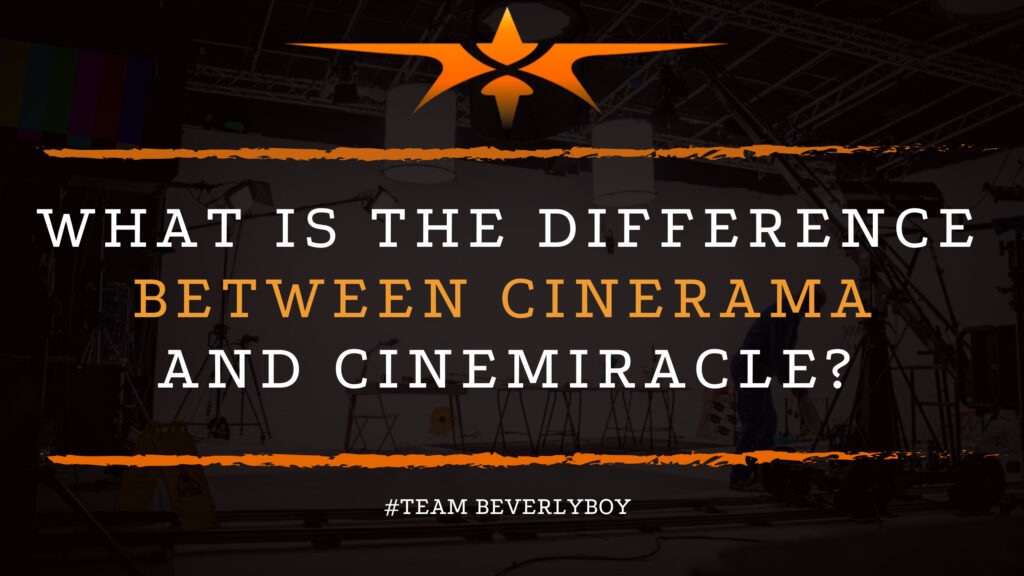What is the Difference Between Cinerama and Cinemiracle?
In the 1950s there were various forms of widescreen cinema formats that were coming to light. Two major competitors were the cinerama and the cinemiracle. But what’s the difference between Cinerama and Cinemiracle? Both are film projection processes that were common in the 1950s. And which provided the widescreen viewing that filmmakers were so deeply interested in. But they were rivals and were certainly different from one another.

CINERAMA
Cinerama was a widescreen projection process that utilized three 35mm projectors that were synchronized to project to giant, curved screens.
The process was introduced in the 1950s as a way of attracting viewers back to theaters as the home television set was largely keeping families at home and not as interested in the theater. The introduction of widescreen was (hopefully) going to draw people back to the movie theaters for fun.
QUALITY ISSUES
The Cinerama projection screens, unfortunately, would prove to be incredibly expensive. And although the display was high-quality, the system would struggle to become commonplace.
When films were damaged, there was a lot of work in repairing them or omitting sections. So that the other three films would remain synchronized. And the use of zoom lenses was not possible as it would impact the three images in the wrong capacity.
Equally a problem was the fact that Cinerama, when viewed outside the sweet spot, was not all that great of an image and would appear distorted on the screen.
CINEMIRACLE
Also announced in the 1950s and in direct competition with Cinerama was the Cinemiracle. Cinemiracle, though, would not be successful at all with their introductions. Only one film would be produced on Cinemiracle and no others in this format would be released.
Cinemiracle had the same concept as Cinerama. Three cameras were used to capture the footage. And then two mirrors were used to provide the left and right camera units the same optical center that the middle camera had.
While the process created less objective join lines between the images when compared to Cinerama. The process simply wasn’t accepted wide stream. And, as a result, only one film would be produced using the format.
DIFFERENCE BETWEEN CINERAMA & CINEMIRACLE
So what’s the difference between Cinerama and Cinemiracle? The primary difference between these two types of filmmaking for widescreen was in the process of how the films were shot.
The Cinerama were shot using interlocked cameras that created a panorama image which was then projected onto the widescreen. The Cinemiracle used mirrors to record a reversed image that was projected through a mirror in the theatre.
A COSTLY ENDEAVOR
Both systems would prove incredibly costly, and hard to integrate into Hollywood. While Cinerama would take off more than the Cinemiracle, neither of the two would last long in the ever evolving film industry.
While there have been some surviving Cinerama films screened at existing Cinerama theaters in recent years. And there are even a few new Cinerama films that were produced. The overall appeal for this comparative to the cost is simply not worth the investment for most filmmakers.


